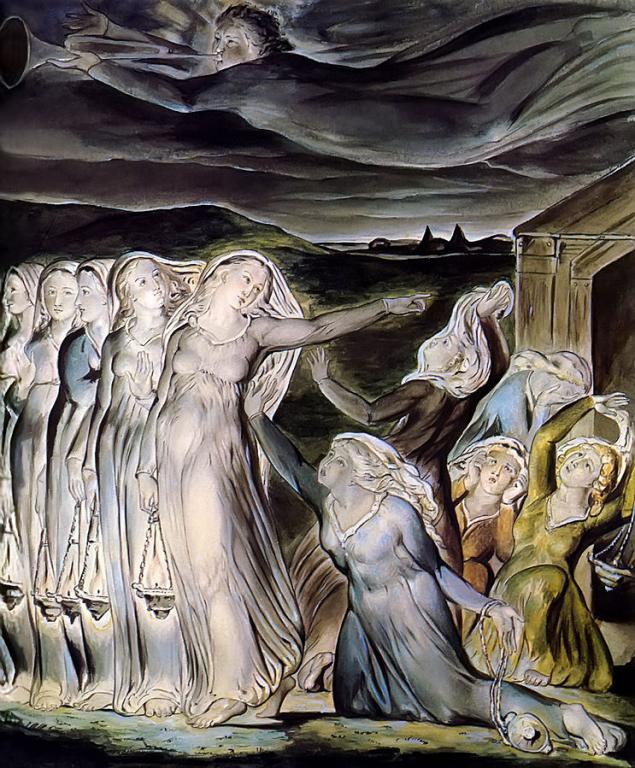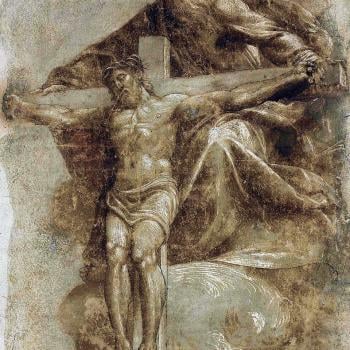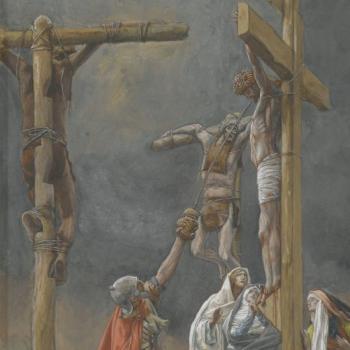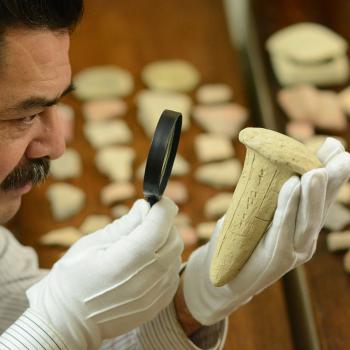
The church calendar has no specific day marking Christ’s return to judge the nations, bring history as we know it to a close, and usher in the kingdom of God in its fullness. Rather, every Lord’s Day or Sunday is intended to help us make preparations. That’s wise, since Christ himself said no one knows the day and the hour: “But concerning that day and hour no one knows, not even the angels of heaven, nor the Son, but the Father only” (Matthew 24:36; ESV). With this point in mind, we must always remain ready for Christ’s return, as the Lord exhorts his listeners: “Therefore you also must be ready, for the Son of Man is coming at an hour you do not expect” (Matthew 24:44; ESV).
Having reflected last Sunday upon the significance of the church calendar for ordering our lives in relation to the past and present people of God, we now address how the future return of Christ should mark each Christian’s life every day of the church year. Hebrews 10:24-25, which was referenced in last Sunday’s entry, exhorts the saints to come together regularly to encourage one another increasingly in their lives of faith as the day of the Lord’s second coming approaches: “And let us consider how to stir up one another to love and good works, not neglecting to meet together, as is the habit of some, but encouraging one another, and all the more as you see the Day drawing near” (Hebrews 10:24-25; ESV).
It makes sense to keep before us constantly in the present the mighty acts of God in history past as well as the eschatological future. After all, Jesus is the Alpha and Omega, the beginning and the end. His incarnation and resurrection mark the entry point into the eschatological future, which penetrates every instant of time so that it is possible for us to live every second as a Kairos moment. As one source reads, “Christ is the Lord of time; he is its beginning and end; every year, every day, every moment are embraced by his Incarnation and Resurrection, and thus become part of “the fullness of time.”
Christians throughout the world do not simply take to heart the liturgical calendar to remember the history of salvation centered in the incarnation, crucifixion, resurrection and ascension, and faithful witness to Christ in the church over the centuries through the Spirit of Pentecost. Christians remember well Christ’s first coming in order to better prepare for Christ’s second coming. Not only do the faithful prepare for Jesus’ second coming as the Advent season approaches at the end of Ordinary Time in late November, but always, as highlighted by the Lord’s Day on every given Sunday. John Paul II eloquently makes this point in his encyclical Dies Domini, which is his papal exhortation to keep the Lord’s Day holy:
- As the Church journeys through time, the reference to Christ’s Resurrection and the weekly recurrence of this solemn memorial help to remind us of the pilgrim and eschatological character of the People of God. Sunday after Sunday the Church moves towards the final “Lord’s Day”, that Sunday which knows no end. The expectation of Christ’s coming is inscribed in the very mystery of the Church (55) and is evidenced in every Eucharistic celebration. But, with its specific remembrance of the glory of the Risen Christ, the Lord’s Day recalls with greater intensity the future glory of his “return”. This makes Sunday the day on which the Church, showing forth more clearly her identity as “Bride”, anticipates in some sense the eschatological reality of the heavenly Jerusalem. Gathering her children into the Eucharistic assembly and teaching them to wait for the “divine Bridegroom”, she engages in a kind of “exercise of desire”,(56) receiving a foretaste of the joy of the new heavens and new earth, when the holy city, the new Jerusalem, will come down from God, “prepared as a bride adorned for her husband” (Rev21:2).
Every Sunday, we remember the Lord’s life here on earth. Every Sunday, we recount his resurrection, realizing he is not dead, but alive and returning. Thus, Jesus’ past is never really past. With every passing Sunday, we move forward to the ultimate Lord’s Day that will never end.
William Faulkner penned the famous line “The past is never dead. It’s not even past” in Requiem for a Nun. Regardless of the literary context of that quote, it is definitely true that salvation history is never dead. It’s not even past, as noted above. So, too, the eschatological future of Jesus’ new world order is never distant. It’s already here. In fact, it’s been here since his first coming. Jesus began his public ministry preaching, “Repent, for the kingdom of heaven is at hand” (Matthew 4:17; ESV). Peter’s first sermon includes words from Joel 2 to explain the meaning of the descent of the Spirit with the display of signs and wonders on the Day of Pentecost: “in the last days” (Acts 2:17; ESV).
Let’s pause for a second, since our calendars don’t account for seconds. Let’s be honest. It’s not easy to remain ready since we’ve been living “in the last days” for a very long time. Rather, it’s easy to get sluggish and slack off in staying alert and awaiting Christ’s return as the liturgical season moves on through the thirty-three or thirty-four Sundays of Ordinary Time every given year. After all, Easter and Pentecost seem so long ago now that we are in late August. Add to that the two millennia since Christ walked the earth.
Having paused for a second on the Lord’s Day during Ordinary Time, it is worth highlighting by way of response that Ordinary Time does not focus on the climactic events of Jesus’ passion and resurrection, but on the entire life of Christ and his teaching and parables and what is entailed in being a faithful disciple throughout our earthly sojourn. Part and parcel of this focus on the entirety of Christ’s life and teaching involving parables is to help us when we come down from the mountain of the Epiphany and Easter seasons and walk about in the valleys below during Ordinary Time in which we need the most ordering of our spiritual lives and imaginations.
Speaking of parables, Jesus’ parables include consideration of faithful service in view of the harvest at the end of the age at his return. The liturgical calendar’s emphasis on Jesus’ teaching and parables during Ordinary Time helps us in our efforts to remain ever mindful of Jesus’ coming to reward his harvest workers. The month of August belongs to the harvest season, which extends through November. The harvest season falls within Ordinary Time, whose liturgical color is green for growth and development to maturation. Here it is worth noting that the church celebrates the Season of Creation beginning on September 1 and which extends for a month’s time. Consideration will be given to this season in ensuing reflections on the liturgical calendar. We are to be good stewards of creation as Jesus’ disciples, just as we are to be faithful servants to invest the talents that the Lord has given to each of us. As in the parable of the sower, seed and soils, may we be like seed sown on good soil, the kind that hears God’s word, understands and obeys it, the kind that makes possible growth that bears much fruit (Matthew 13:18-23). As in the parable of the wheat and weeds, may we be like the harvested wheat gathered and stored in the Master’s barn (Matthew 13:24-30). As in the parable of the wise and foolish virgins, may we bring flasks of oil with us as we await the bridegroom’s coming (Matthew 25:1-13). As in the parable of the servants and talents, may we be faithful in a little so that God will entrust us with stewarding much more at his return (Matthew 25:14-30). As in the teaching—though not a parable—of the great judgment and the separation of the sheep and the goats, may we long to hear Jesus echo the following words to us:
Then the King will say to those on his right, “Come, you who are blessed by my Father, inherit the kingdom prepared for you from the foundation of the world. For I was hungry and you gave me food, I was thirsty and you gave me drink, I was a stranger and you welcomed me, I was naked and you clothed me, I was sick and you visited me, I was in prison and you came to me.” Then the righteous will answer him, saying, “Lord, when did we see you hungry and feed you, or thirsty and give you drink? And when did we see you a stranger and welcome you, or naked and clothe you? And when did we see you sick or in prison and visit you?” And the King will answer them, “Truly, I say to you, as you did it to one of the least of these my brothers, you did it to me” (Matthew 25:34-40; ESV).
In view of Jesus’ parables and instructions on his return, let’s mark our calendars daily to remain ready, while there’s still time.












